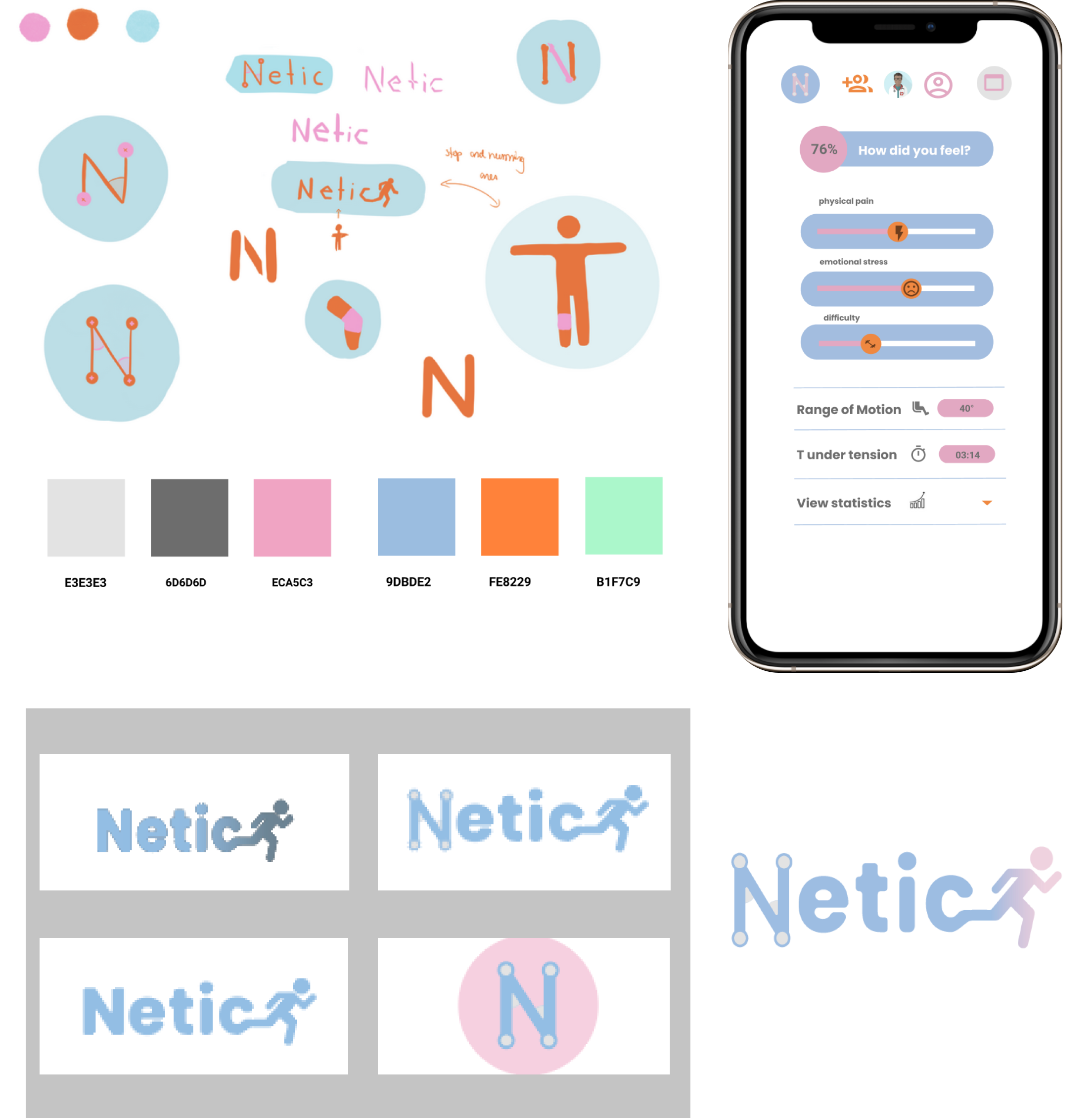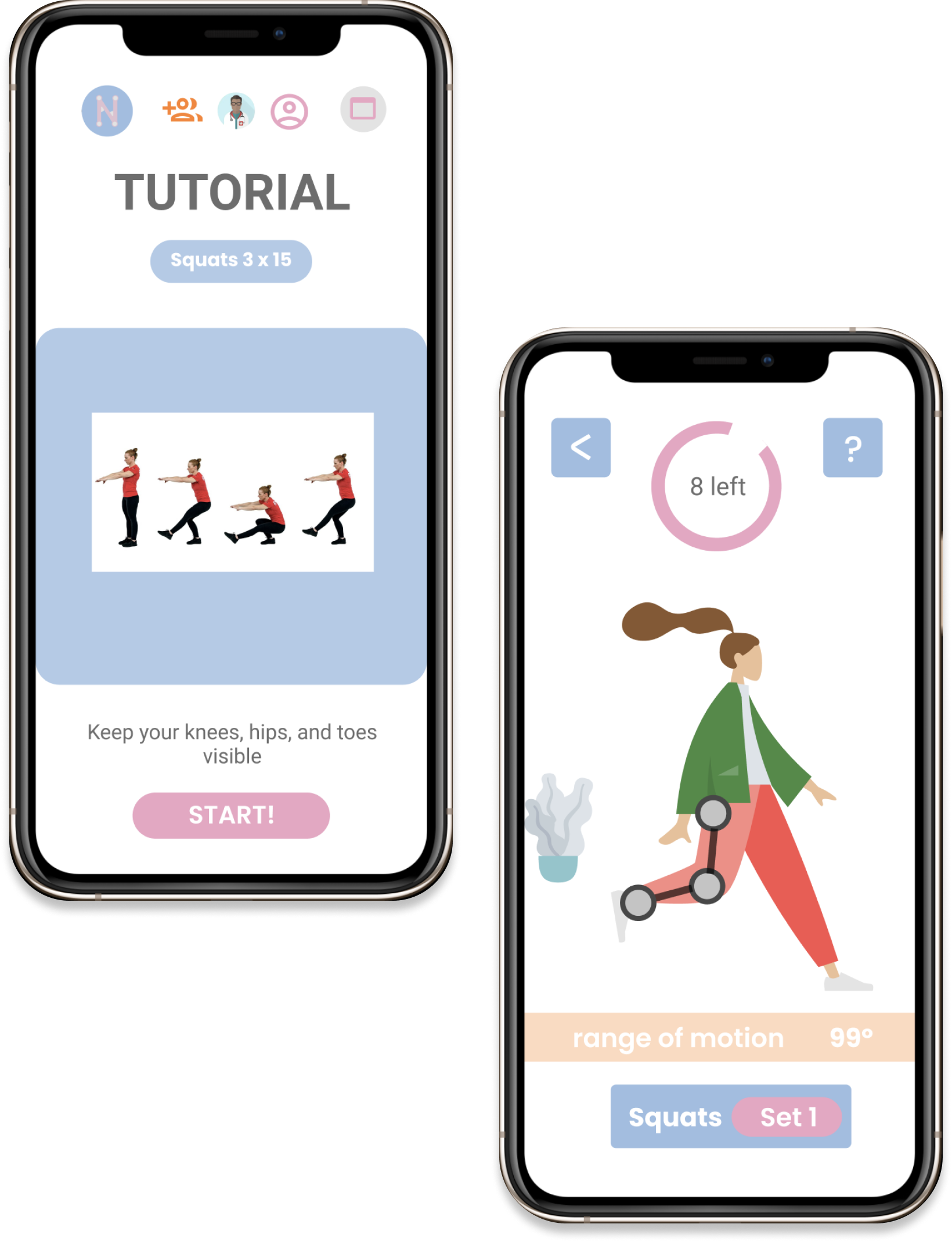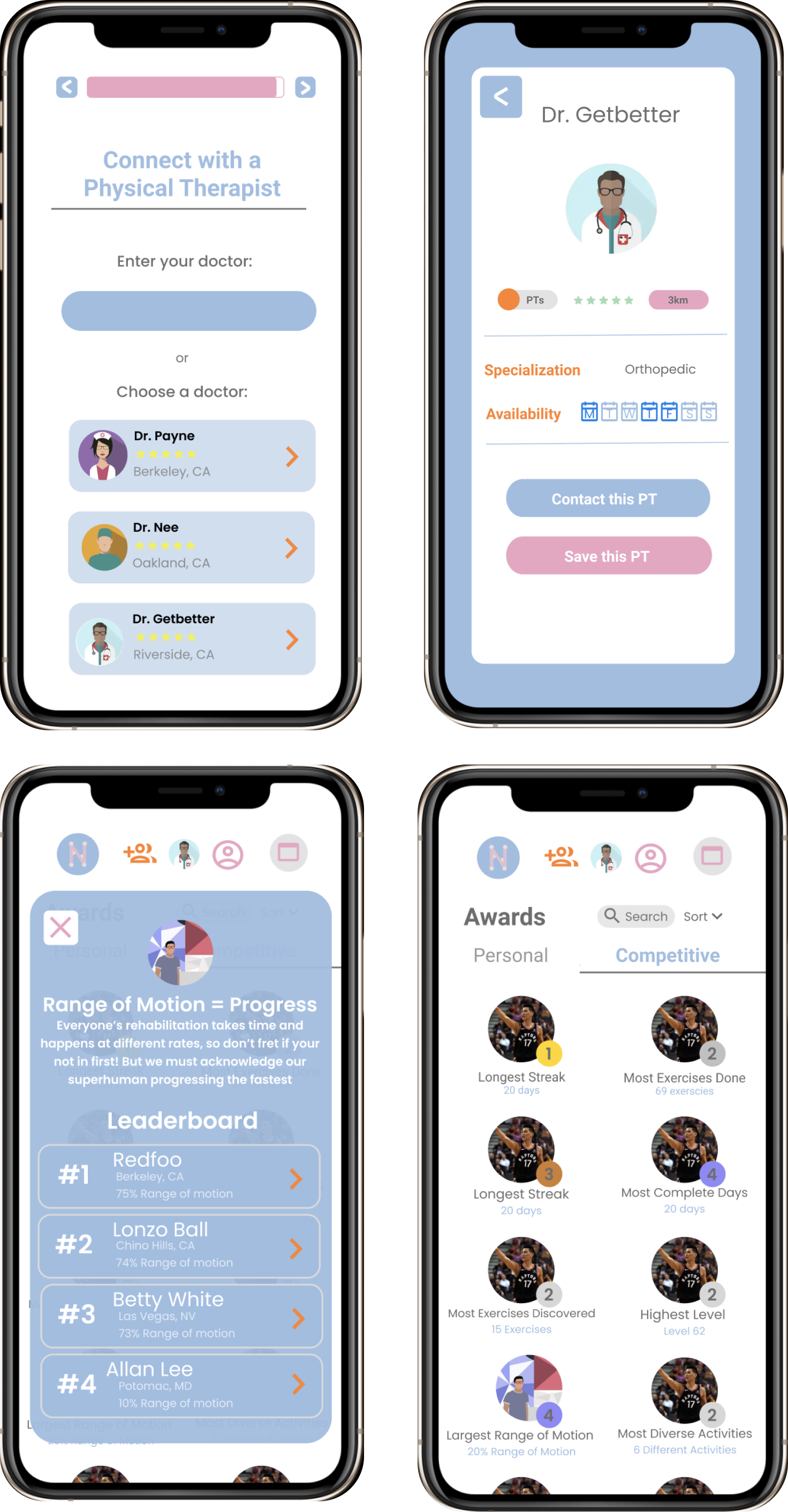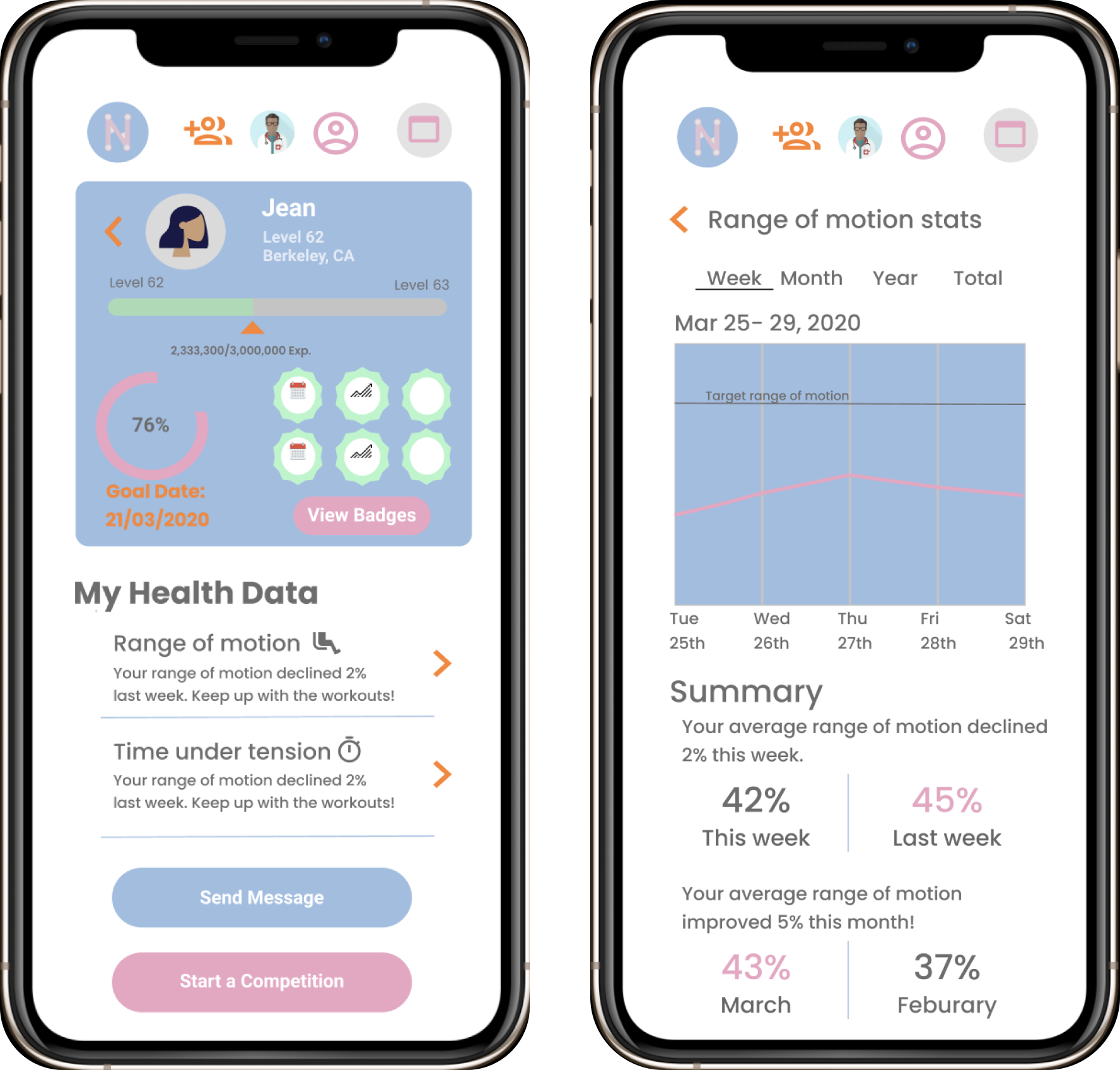

Project Lead

Design Consultant

Design Consultant

Design Consultant

Design Consultant

Code Consultant

Main iOS Developer @ Netic Health

Co-Founder of Netic Health
Our challenge was to wireframe an app to allow patients to track their physical therapy all while incentivizing them to complete their exercises. Additionally, we were tasked to create branding and further develop the ML basis for measuring the activity of the user.
We partnered with Netic Health, a Berkeley-based startup. Netic aims to provide physical therapy and rehabilitation to anyone through a smartphone.
Current physcial therapy patients oftentimes do not finish their workouts. They need a tool that will help them track their progress, chat with professionals, guide them through exercises, and motivate them to continue therapy.

who need access to physical therapy at home




Our solution involved creating a brand around PT, developing the ML to follow movement, wireframing an interactive app, and user testing to see if our changes resonated.


One of the essential features of the app is the AI technology that monitors how each exercise is executed by the patient. Virtual tools are set up to measure range of motion, angles, and time under pressure of their joint.
We wanted to highlight the use of AI and the element of visually tracking the limbs in our logo, so we added angels and measurements to the lettering. The eventual goal of recovery is reflected by the sprinting person illustrated at the end of the logo itself. Finally, we also decided to change the name from NeoMotion AI to Netic Health.



Working with the Netic Tech Team,
we needed to create models to learn both camera parameters
and user poses with only a series of images as inputs.
In pursuit of this goal, we reviewed, learned,
and implemented the basics of pose estimation via an algorithm
that roughly follows the guidelines outlined in [KKA],
using Python and TensorFlow for most of the heavy lifting.
Despite the mid-semester shift, we shifted to a Unix environment
for running and testing our pose estimation simulations.
Ultimately, we were able to implement camera parameter estimation
and many of the basics of pose estimation,
and are steadily working our way toward a high fidelity real-time pose estimator.



Though at first the platform was solely a place to help patients who needed help with physical therapy, unrelated to any medical entity, the coronavirus pandemic showed the need for having a medical professional at hand and gave us an insight into the growth that we will most likely experience in the Telemedicine Industry in the coming months and years.
Another feature introduced throughout the process was the idea of adding some sort of social gamification to the platform so as to make it more appealing for patients to follow-up on their treatment by encouraging healthy competition. We realized that this physical therapy app could be used for everyone. We do realize that it is usually people of an older demographic that are more likely to need knee replacements. In that regard, we wanted to make things on the app as functional and efficient as possible. Text is enlarged, the home page is strictly dedicated to workouts so one exactly knows where to go for his/her routine. We wanted to make sure that the purpose of this app does not get clouded in all the features we put in and make our intentions as clear as possible.



Some features we wanted to address were:
One thing that was found in user testing was that people were more inclined to use fitness apps if there was a social aspect involved. Thinking of a brand new patient that is struggling we wanted to hone in on the gamification aspect of the app to incentive people to keep up with their at home workouts.
In the end, we were able to create a working Figma prototype that properly encompasses all the different aspects that were envisioned by Netic Health; including a new company logo, name and slogan, a mission statement, and a fully designed mobile application with features such as connecting to a PT, a way to track information, a "gamified" social connection, and a way for people to easily utilize the machine learning technology developed by the company.
